Net zero explained: Why Amazon, Microsoft, & M’sia itself are pledging to be carbon neutral

[This is a sponsored article with MRANTI.]
Achieving carbon neutrality is all the buzz right now in the business world.
Apple and Microsoft have set goals to become carbon-negative by 2030. Amazon and General Motors have vowed to achieve carbon neutrality by 2040. Meanwhile, Google claims that it’s maintained carbon neutrality since 2007.
The Malaysian government also announced that it is committed to lowering the country’s carbon emissions by 45% by 2030, and achieving net-zero emissions by 2050. The idea is to foster a green economy by promoting low-carbon industries, decarbonisation, a circular economy, and clean energy transitions.
But, what does it mean to be carbon neutral, and why are companies—even countries—gunning for it?
Carbon jargon, explained
Every action you take, whether it’s driving, blasting your aircon, or any other activity that emits carbon dioxide, contributes to your carbon footprint. Carbon accounting is used as a metric for companies to estimate their carbon footprint.

Striving for carbon neutrality involves balancing out these emissions to achieve net-zero carbon emissions. From a consumer perspective, this can be done by offsetting your carbon footprint through means such as installing solar panels for your home or transitioning to an electric vehicle.
You can also purchase carbon offsets or carbon credits to make up the difference. This could include investing in carbon offset projects like planting trees or wetlands restoration.
By achieving carbon neutrality, you ensure that your carbon dioxide emissions have a net-zero environmental impact.
This is crucial in combating the effects of climate change, as greenhouse gases contribute to rising global temperatures and climate-related risks such as floods, droughts, and rising sea levels.
But why are we doing this?
As a reminder, the Malaysian government has vowed to lower the country’s carbon emissions by 45% by 2030, and achieve net-zero emissions by 2050. And there’s a reason for that timeline.
“Since 2015, Malaysia has pledged to contribute to global climate change efforts via the Paris Agreement,” said Khalid Yashaiya, Chief Strategy Officer of the Technology Innovation Park Malaysia (MRANTI).
Briefly, the Paris Agreement is a legally binding international treaty on climate change that was established at the United Nations Climate Change Conference in Paris, France, in December 2015.

The main goal is to keep the global average temperature rise below 2°C compared to pre-industrial levels. Additionally, efforts are being made to limit the increase to just 1.5°C above pre-industrial levels.
Did you know: Pre-industrial levels refer to any period before the start of the Industrial Revolution (pre-1760).
This has led Malaysia to launch policies like the New Industrial Master Plan (NIMP), National Energy Transition Roadmap (NETR), and the Hydrogen Economy and Technology Roadmap. Together, they serve as strategic guidance and implementation roadmap to address the carbon-related challenges, and for the government to drive the economy decarbonisation and clean energy transition.
“It is fundamental to understand that achieving carbon neutrality is not just about having policy in place but also financial considerations, market forces and mindset change,” Khalid added.
“Loss & Damage (L&D) fund introduced in the COP28 is an example of financial considerations to incentivise countries and businesses to consider ESG, whereas mindset shift requires more than policy change and financial incentives, rather it needs time and enforcement.”
Khalid further elaborated that delaying Malaysia’s decarbonisation actions can lead to various disadvantages. They include weakening the nation’s position in international climate negotiations, and reducing our access to crucial financial and technological support.
Furthermore, as developed and developing nations have shared responsibilities in combating global climate change, Malaysia will have to do the same.
Doing so will provide the country with cross-border economic benefits such as free trade zones and multilateral trade partnerships, which are now becoming more ESG-driven.
In addition, achieving net-zero emissions in Malaysia by 2050 would have profound impacts across social, governmental, and economic dimensions.
For example, staying within the 1.5°C global warming limit will increase Malaysia’s resilience to climate-related risks such as flash floods, droughts, and heat waves.
Embracing the use of renewable energy and sustainable practices can also result in better economic opportunities. This is because the global renewable energy market size is projected to reach US$245 billion (around RM1.14 billion) at a CAGR of 9.47% between 2024-2032.
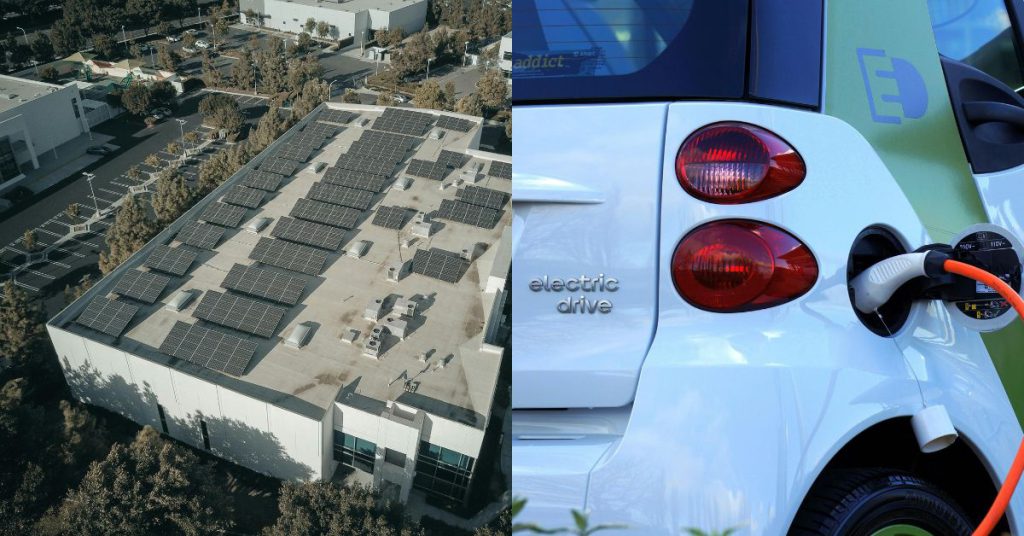
“Capturing even 1% of the total market would bring various positive spillover effects to the nation’s energy sector’s supply chains, new workforce skill sets, as well as new energy technology innovation and applications,” Khalid added.
Ultimately, transitioning to cleaner energy sources would lead to improved air quality, better public health outcomes, and reduced healthcare costs associated with air pollution-related illnesses.
So, what is Malaysia doing to achieve this?
As Malaysia’s one-stop research commercialisation agency with the resources to accelerate the commercialisation of innovative ideas that will drive impact, MRANTI has launched its Force For Good (FFG) campaign.
It’s part of the agency’s effort to support the country’s sustainability agenda, both within its organisation and for the rest of its ecosystem players.
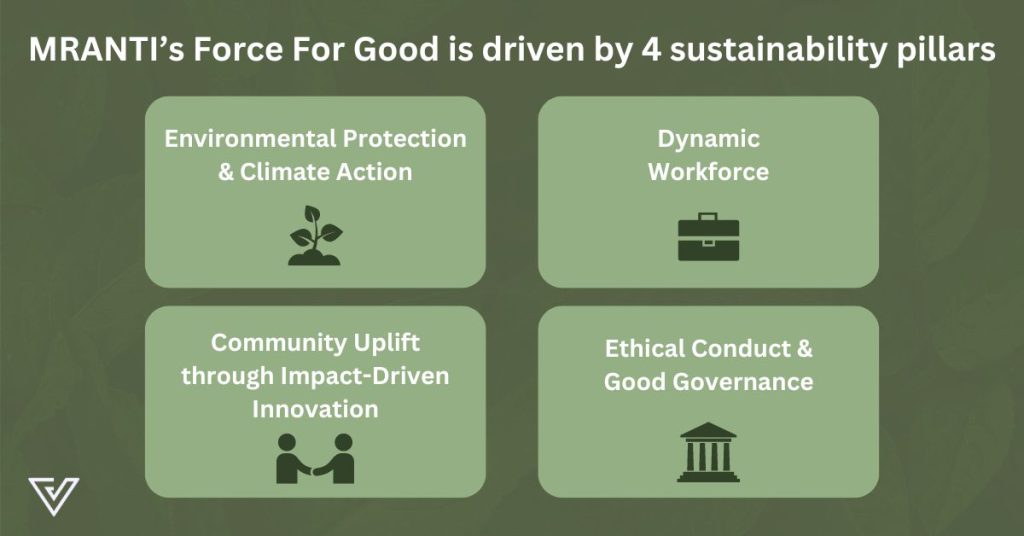
As part of the initiative, MRANTI aims to develop its 686-acre MRANTI Park into a carbon-neutral science and technology hub.
The goal is to have MRANTI Park be a one-stop centre bringing together researchers, creators, and innovators to nurture ideas into industry-changing solutions.
Within the park, there will be various ESG-focused initiatives conducted to build up MRANTI’s workforce and for startups, governments, and the greater business landscape to become sustainability and community-driven.

For example, the MRANTI ESG Learning Framework will be developed to upskill employees in line with local and global ESG needs.
Additionally, MRANTI is incorporating ESG-driven business modules into its new and existing accelerator programmes.
Startups that participate in MRANTI’s programmes will be trained and mentored through an eco-conscious approach. They will also get access to high-tech resources to R&D and commercialise products responsibly, such as through MakersLab.
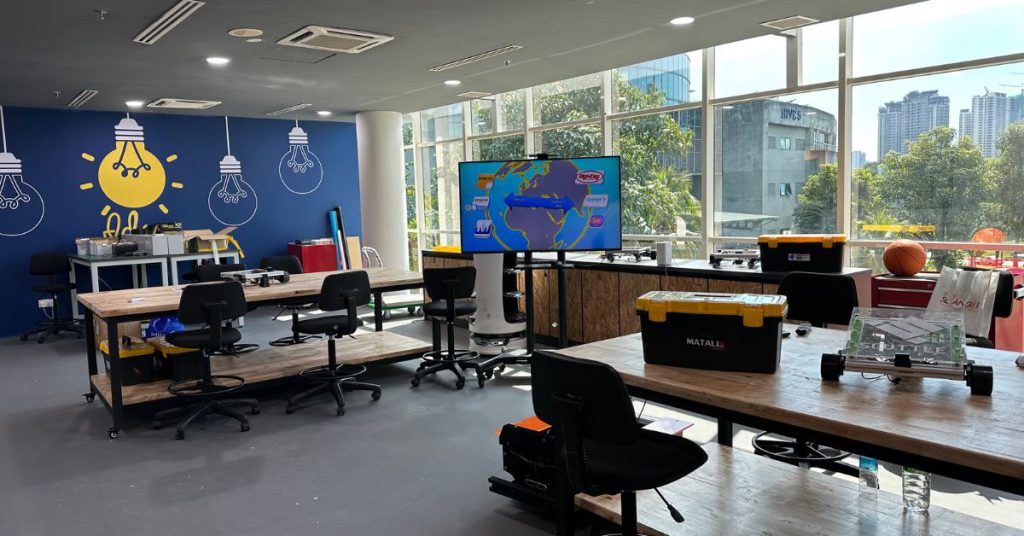
Under the FFG initiative, Khalid added that MRANTI is looking to grow startups and innovators in the sectors of dronetech, robotics, and autonomous vehicles, as well as those in healthtech, biotech, and agritech.
“We foresee these technology pathways would naturally be pivoted to promote sustainability-driven technology that considers natural resources and fosters economic and social development,” he stated.
-//-
One of Malaysia’s biggest challenges on the road towards net zero lies in decarbonising our energy-centric economy that’s highly reliant on fossil fuels.
While acknowledging the challenges, the UNDP considers Malaysia’s goals as “ambitious yet achievable” with strong international support and effective implementation, Khalid shared.
Ultimately, based on KPMG’s Net Zero Readiness Index findings in 2019, Malaysia was able to reduce its carbon emissions intensity rate to 33%. “It was done with minimal disruption to policy making, policy, and regulatory changes,” he elaborated.
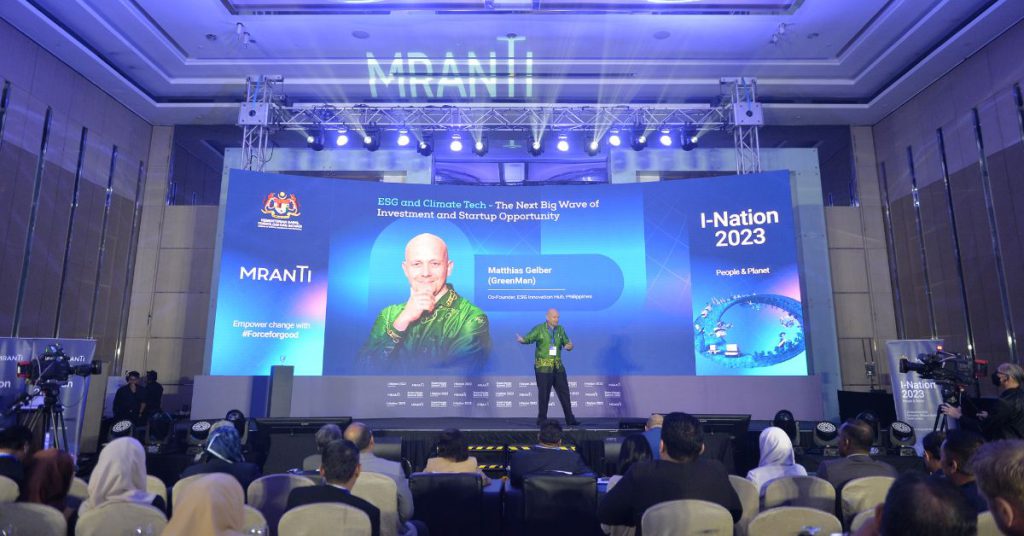
That said, Khalid stated that achieving the targeted carbon emission reduction in the next few years requires a whole-nation approach. This would have to involve policy interventions, tech advancements, changes in energy production and consumption patterns, as well as the public’s participation.
The good news is that several policies are already in place, with the Bursa Voluntary Carbon Market (VCM) and the Malaysia Airlines’ Voluntary Carbon Offset Programme as some examples.
“These initiatives mark a significant stepping stone to encourage more enterprises or government-driven entities to embark and support carbon offsets projects in Malaysia,” he commented.
Also Read: 3 GenAI use cases with the potential to take off in M’sia, based on global examples
Featured Image Credit: Associated Press / Microsoft / Pexels
This kombucha café in Bukit Jalil said goodbye only to reopen in the same spot months later
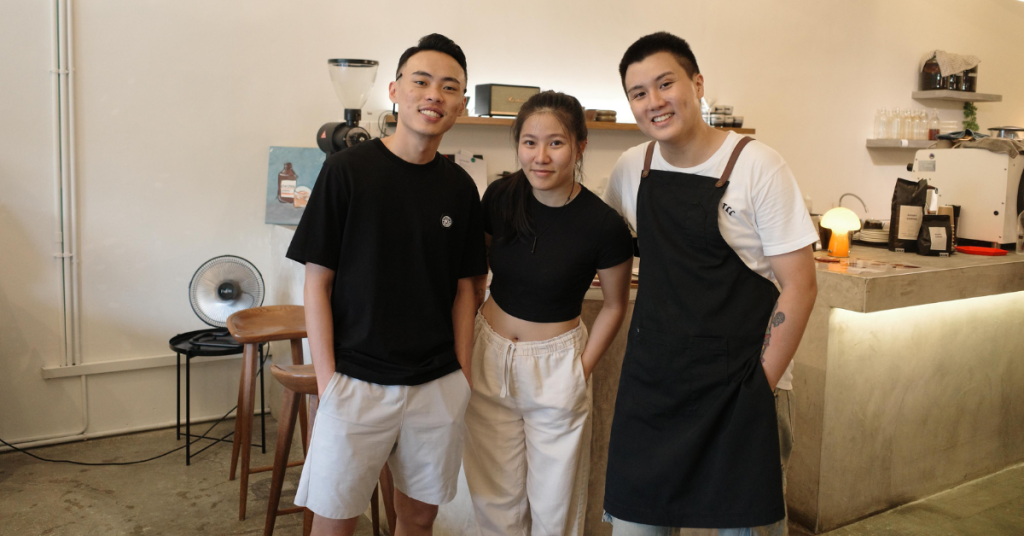
A few months ago in January, a café that appeared to be shutting down came across our radar. At the very least, it seemed to be relocating.
Called Scoby Cafe, it’s a spot serving up coffee and brunch, touting to be the first kombucha café in Malaysia.
On Instagram, the team had posted a series of images with the caption “last day of operation”, thanking their patrons for the past three years. “Been a great pleasure serving the Bukit Jalil neighbourhood/community,” they wrote in one image.
Given that messaging, imagine our surprise when a couple months later the café announced that they had reopened. In the same spot.
Curious about what happened, we reached out to learn more about Scoby’s story, straight from the founder’s mouth.
Bubbling up
Describing himself as “just another local dude from KL”, Chester Yong is the founder of Scoby.
After getting his Bachelor’s Degree in Finance and Management in Sydney, Chester had worked as a full-time barista for four years.
But once his visa expired, he made the decision to return to KL. This was right when the pandemic began, and he ended up being amongst the first batch of returnees to be placed in quarantine.
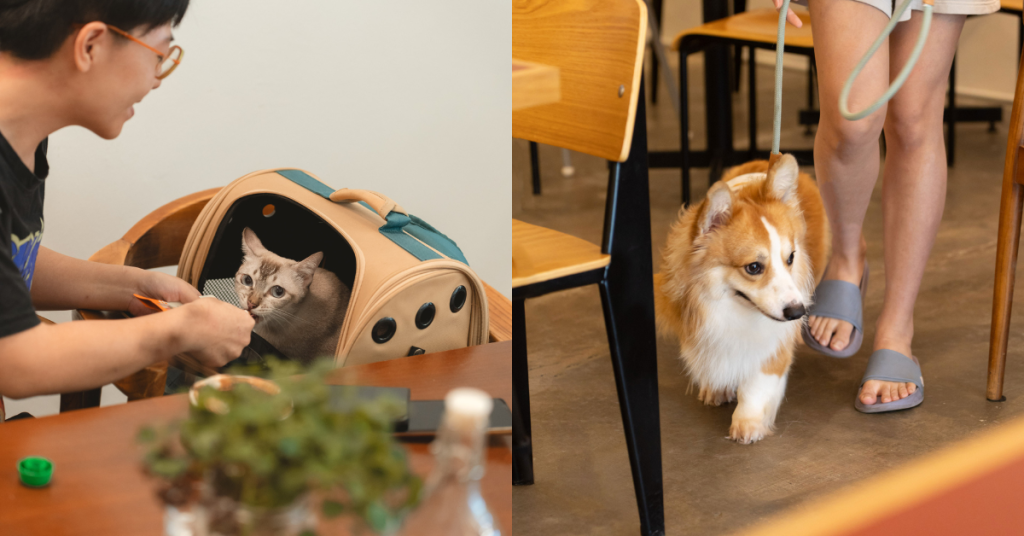
At the time, the economy had been in a downturn, and there were few places hiring for his major. At the same time, Chester encountered his first “localised” kombucha at a café called Sunday Coffee & Cakes, which changed his mind about the beverage.
“My first impression of kombucha was in Australia, which is horrible, as it was so gassy that you can’t even drink it with your rice—you know how we Asians drink while we eat too,” Chester said. “The Malaysian way of making kombucha is so much more comfortable.”
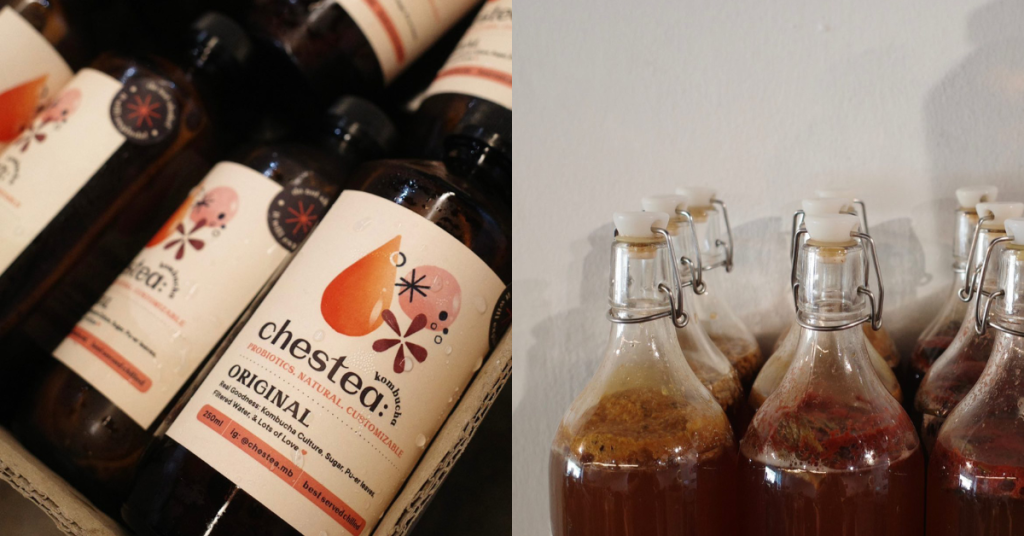
Hence, he founded his first kombucha brand called CHESTEA. It started out as an online business, but eventually the concept grew into what Scoby is today.
“I believe every barista dreams to own their own little café, hence the first kombucha café in Malaysia, ’cause why not right?”
The start of something new
Explaining the closure of Scoby earlier this year, Chester revealed that it was just for a renovation.
The decision to do so came down to the competitive market. Essentially, the team felt like an upgrade was needed to stay relevant.
But if so, why frame the upgrade as some kind of farewell?
“Well, it’s definitely one of our marketing strategies,” he admitted. “We all can tell nobody really cares if one shop is renovating, but in fact us posting like that gained us huge amount of publicity and attention.”
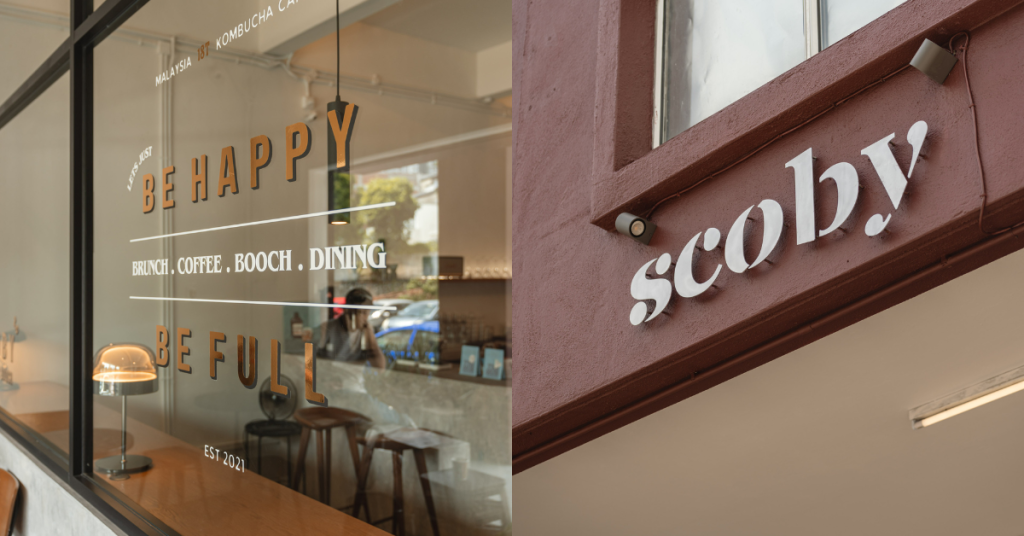
He clarified that the announcement only mentioned that they were closing chapter one, rather than closing down entirely.
On top of that, regulars of the business would’ve noticed the signage put up about a month prior to the renovation period.
“People who thought we’re closing down definitely don’t come to Scoby as often, and that was the whole purpose of the post—gaining these people’s attentions.”
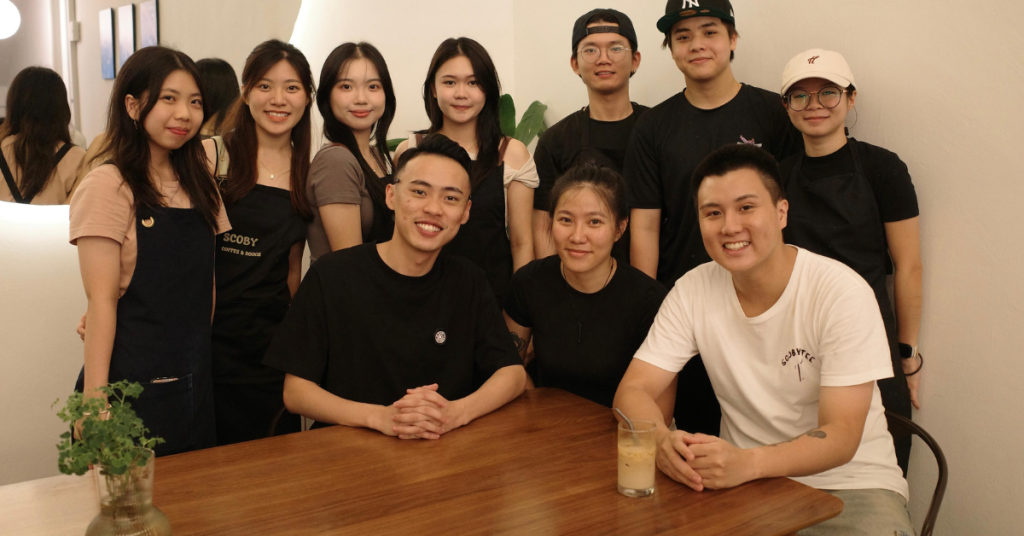
The brand refresh also seemed to have attracted more customers, with a Google review mentioning that they had no idea there was even a “first chapter” there prior to the reopening.
Despite now being on to the second chapter, Chester said that nothing big has change in terms of the brand’s core philosophy and values.
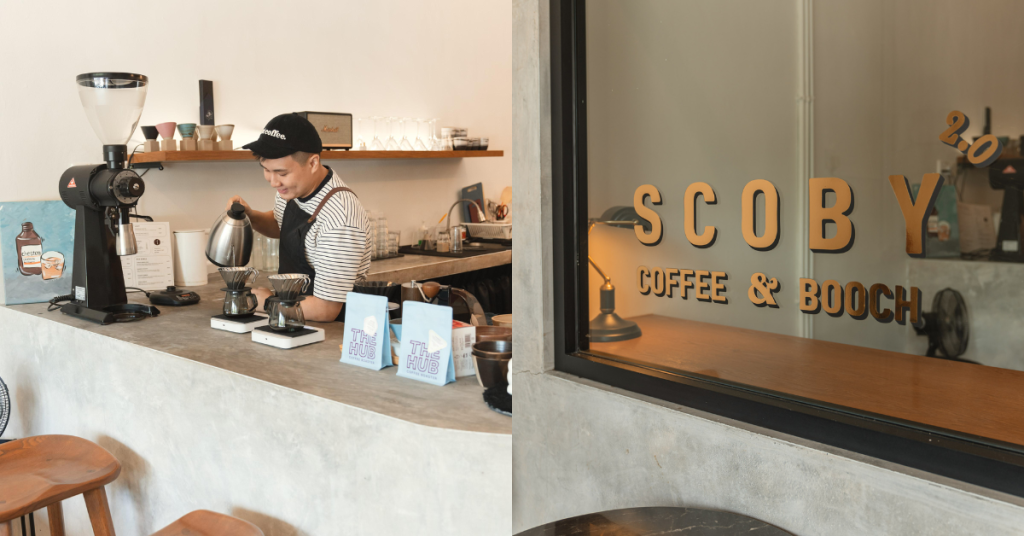
Rather, the refresh involves improvements more so than big changes. Aside from optimising their operations and adopting better practices for customer relations, they’ve also worked to update the space, switching up the seating and adding plug points to cater to their regulars.
Staying afloat
The Bukit Jalil area is home to many other F&B spots, though, making it quite the competitive zone for a café.
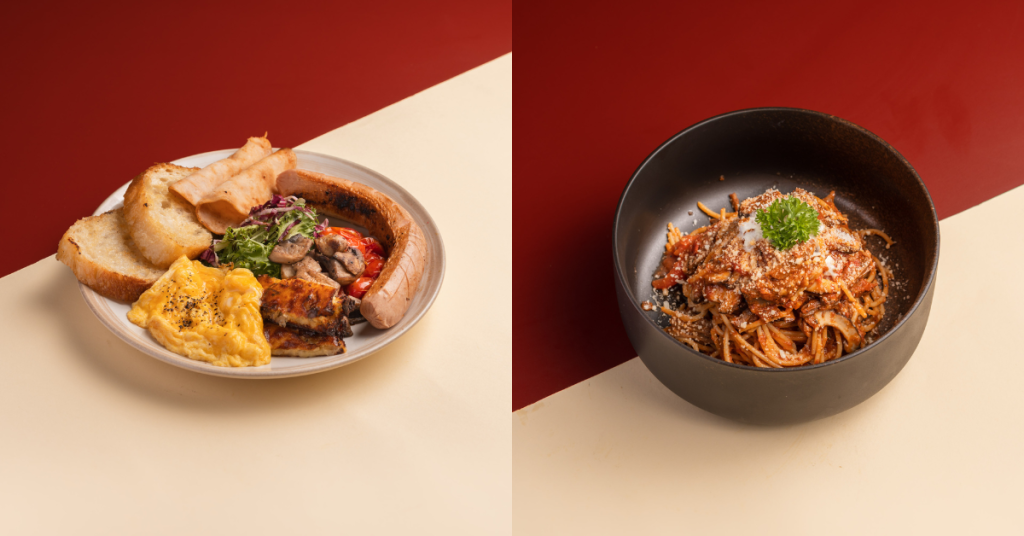
Chester himself describes the scene as being “insane”, especially since the Pavilion Bukit Jalil mall cropped up.
“That is where we start seeing the sales drop,” he revealed. Marketing efforts (such as the whole “closing of a chapter” stunt) go towards culling this downturn, but that’s only a bandaid.
The sustainable solution, of course, is by just offering really good food and really good service.
“Customers will definitely visit once when shops are newly opened, but a business only survives by having constant regulars,” he mused.

He believes that Scoby’s constant flow of regulars is an indicator that the business is doing something right. Chester personally thinks it’s their customer service that sets them apart, though.
“I started working as a barista in Sydney, and people get really friendly over there,” he explained. “I really hate the scene in Malaysia where most (not all) baristas like to be just a cool-looking dude or lady behind the bar and swinging their shots like an idol. Bro, come on.”
This year, Chester plans to expand the Scoby brand in one way or another, with honest food and excellent customer service as their core.
Also Read: How financial institutions & universities are reshaping their network through AI-native solutions
Featured Image Credit: Scoby Cafe
Malaysian startups need to stop copying the Silicon Valley playbook, here’s why
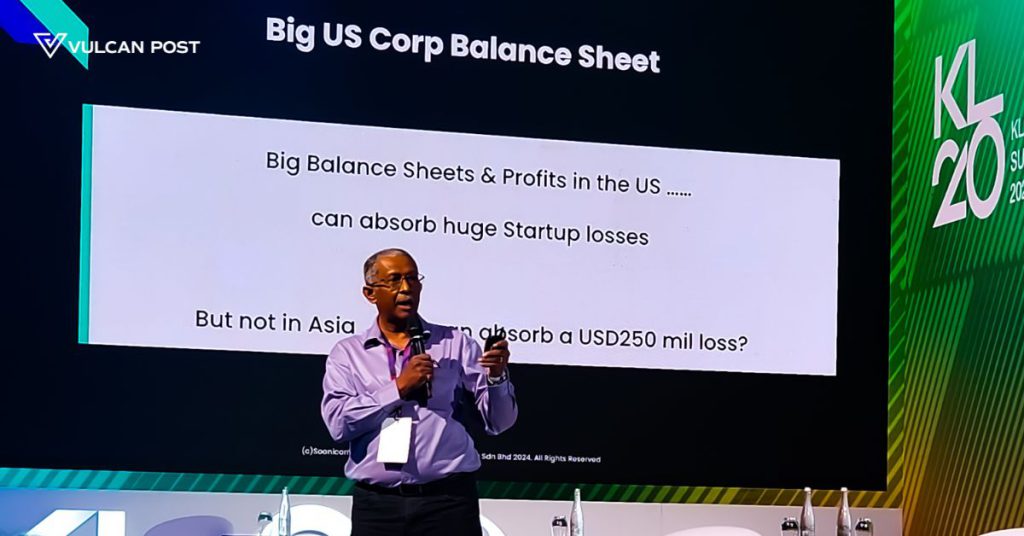
For decades, the startup narrative has been dominated by Silicon Valley’s mantra which is to raise capital, scale rapidly, and flip for profit.
Silicon Valley, a region in Northern California, is a renowned hub for high technology and innovation. It hosts numerous global tech giants and thousands of startups, making it a focal point for tech development. It also attracts a significant portion of venture capital investment in the United States.
However, this Silicon Valley narrative doesn’t hold true for many companies, especially in regions like Malaysia and Southeast Asia, according to Soonicorn Collective chairman Dr Sivapalan Vivekarajah, who spoke at KL20 Summit 2024.
It’s time to challenge this conventional wisdom and focus on building profitable and enduring businesses. Here’s why that’s important.
Limited acquisition opportunities
Firstly, the Silicon Valley startup narrative doesn’t always translate well outside of the United States.
Contrary to popular belief, the majority of mergers and acquisitions in the United States fail, with up to 90% of deals ending in disappointment, said Dr Sivapalan, citing a Harvard Business Review statistics.
“In Asia, very few acquisitions occur due to companies adhering to the traditional narrative of raising significant funds and prioritising rapid revenue growth despite substantial losses,” he said.
Hence, this situation is detrimental not only to investors and venture capitalists but also to the overall ecosystem.

Despite recognising these challenges, many companies continue to adhere to this narrative and often find themselves struggling to find buyers or sustain profitability.
This also makes the exit options for startups constrained, leading to stagnation and disillusionment.
Fundraising challenges
Even for companies that manage to raise significant funding, sustaining growth and profitability remains a challenge.
“It is challenging to raise funds, especially in recent years, which have been among the most difficult for fundraising.”
“Consequently, companies face tough decisions if they cannot raise capital. Many have struggled to retain staff, even those that successfully raised significant amounts, leading to layoffs of up to 30%, 40%, or even 50%,” said Dr Sivapalan.
He added that this trend stems from the prolonged difficulty in securing subsequent rounds of funding, forcing companies to downsize.
Additionally, in Asia, there is a scarcity of corporate buyers for startups. Despite aspirations to sell to Asian buyers, such acquisitions are rare exceptions rather than the norm.
“In Malaysia, for instance, the number of large corporates acquiring startups over the past decade is minimal, indicating the rarity of such occurrences in the region’s ecosystem,” he shared.
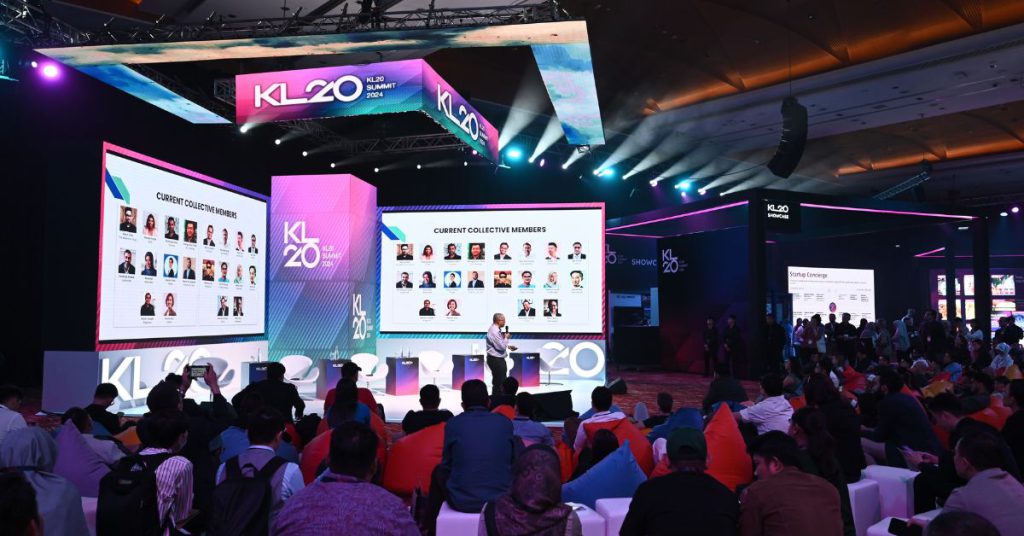
With investors increasingly focused on profitability and cash flow, startups must demonstrate a clear path to sustainable growth to attract funding.
And on that note, the way forward includes…
Embracing profitability
Startups must shift their focus from rapid growth at any cost to building profitable and sustainable businesses.
By prioritising profitability and capital efficiency, companies can weather market fluctuations and attract long-term investors. Thankfully, our local startups already have one foot in the door when it comes to this.
“Many companies, especially those unable to raise funds, naturally become more capital efficient. This efficiency is appealing to investors, particularly those from Singapore, who appreciate Malaysian companies’ ability to operate efficiently without relying on large fundraising rounds like their counterparts in Singapore and Indonesia.”
“Instead of chasing short-term gains through quick exits, aim to build enduring businesses that can last for generations,” he said.
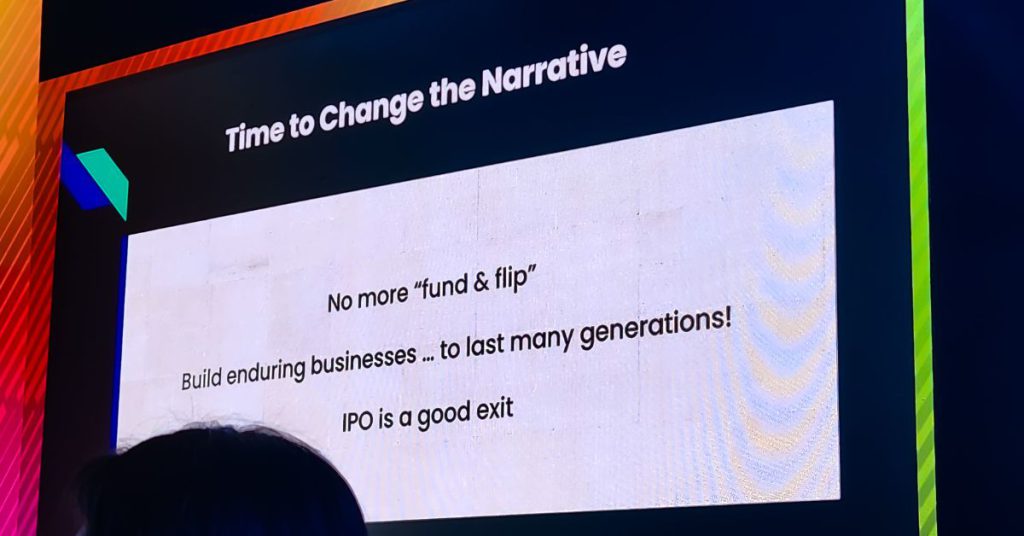
The most successful companies, such as Facebook, Google, and Microsoft, are not built on the promise of a quick flip but on the foundation of enduring, multi-generational businesses.
He reiterated that startups should emulate their focus on long-term sustainability and value creation rather than seeking quick returns through premature exits.
Exploring IPOs
Going public through an Initial Public Offering (IPO) is a viable option for startups looking to build enduring businesses.
“To establish enduring legacies, these companies opted to IPO, listing their shares on global stock exchanges, thus solidifying their position as long-lasting enterprises.”
“Contrary to common belief, achieving an IPO isn’t as challenging as perceived. While there’s a prevailing stereotype surrounding IPOs, astute businesses recognise the feasibility of this path.”
“I encourage you to reconsider the notion that IPOs are inaccessible,” noted Dr Sivapalan.
This is because, by IPO, companies gain access to public markets, investor capital, and increased visibility, paving the way for long-term growth and success.
Long story short, it’s time for startups in Malaysia and Southeast Asia to rethink the traditional startup narrative and focus on building profitable, enduring businesses.
This is a discussion that we know is already taking place in the Malaysian startup scene, and as more established brands set an example for it, here’s to hoping Malaysia can grow to be a nation of prosperous, profitable businesses.
- Learn more about the KL20 Summit 2024 here.
- Read other articles we’ve written about Malaysian startups here.
Also Read: How financial institutions & universities are reshaping their network through AI-native solutions
Featured Image Credit: Vulcan Post
Keeping a fading legacy alive, these M’sian sisters’ Peranakan beadwork shoes start from RM1K

For Swee Lin and her sister, Swee May, beaded footwear is an integral part of their Chinese Peranakan heritage. Hence, they are on a mission to preserve the fading legacy.
The siblings are no strangers to the challenges of building a business from the ground up. Swee Lin, founded the PichaEats startup, which provides meals by refugees, eight years ago, and is currently running a small consulting firm called Swee & Co.
While Swee May, contributed to the pioneer team that launched the Genting SkyWorlds Theme Park.
In 2022, they joined hands to weave the threads of their Peranakan heritage into the fabric of modernity through their business called ManekNya.
Weaving threads of tradition with modernity
It was Swee Lin’s humble roots that sparked her desire to reignite the flame of Peranakan culture in the hearts of the younger generation.
“Normally, when we hear the word heritage or culture, it’s often associated with the past,” Swee Lin reflected.
“I wondered why is that so? Is it because the designs are too old school? The way of running things is not how we like or are used to?” she asked.
And so, ManekNya was born—a brand that serves as a bridge between the past and the present, offering a contemporary spin on age-old customs.
Transitioning from the realm of F&B to fashion and heritage was no easy feat, but Swee Lin’s years of entrepreneurial experience provided a sturdy foundation.
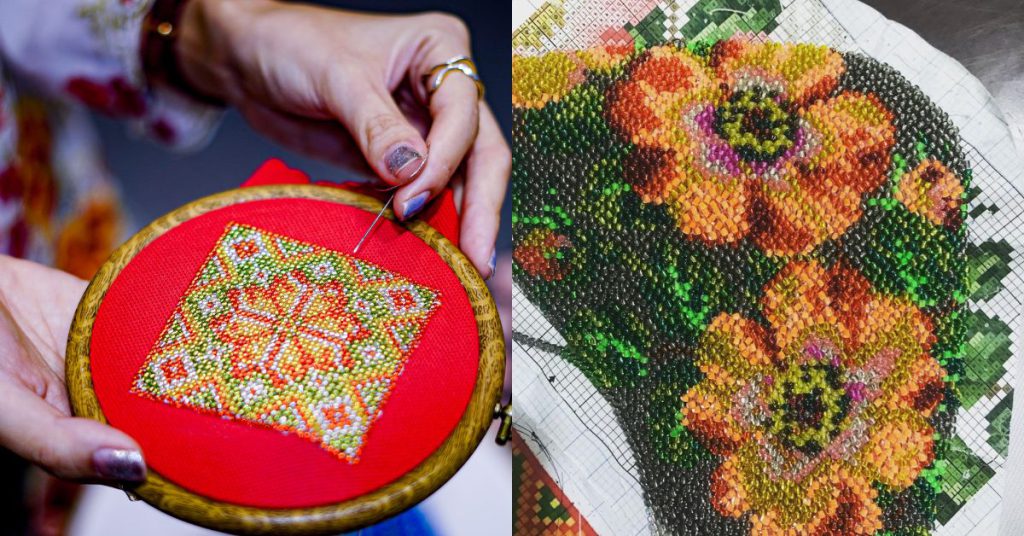
The essence of childhood memories
Yet, it was the memories of their grandparents’ home that truly shaped their vision.
Surrounded by the sights, sounds, and flavours of Peranakan culture, the sisters found inspiration in the stories of their ancestors.
“Our grandmother was the epitome of strength and grace. Her quiet demeanour belied a fierce determination to preserve our heritage,” Swee Lin told Vulcan Post.
Hence, the essence of ManekNya is a tribute to their grandmother’s legacy and Peranakan heritage. “Manek” means beads, and “Nya” refers to Nyonya or mother.
“We chose to work with beads first because we realised that the art of beading is the least well-known among us, even amongst the Peranakan folks,” she shared.
But their journey didn’t end there. Recognising the need to empower underrepresented communities, ManekNya embarked on a mission to provide vocational training to single mothers, retirees, and the unemployed in Klang Valley.

“At the end of the training, ManekNya will act as an employer to provide them with job opportunities, on-the-job training, and [pay them] for their work,” said Swee Lin.
Currently, they have about 10 retail partner stores in Kuala Lumpur and one retail partner in Singapore.
Tiny beads with big impact
When it comes to the beads themselves, they’re not your average ones—they use special seed beads such as Miyuki seed beads and Czech glass beads which can be as tiny as 0.5mm, requiring some serious skill to handle.
They painstakingly place each bead by hand, ensuring that every stitch is flawless, resulting in stunning and long-lasting pieces.
But what sets them apart even more is their fusion of tradition with modern flair. They’re not afraid to experiment with vibrant color palettes, abstract patterns, or even collaborate with contemporary artists, infusing their creations with a fresh and youthful vibe.
The siblings and their team craft every piece with love and attention to detail, from beaded shoes to adorable cat-themed patches, making each one truly one-of-a-kind.

“Each pair of shoes can range from 10,000 beads to 20,000 beads, meticulously crafted to uphold the tradition of Peranakan beadwork while incorporating modern elements and designs,” she said.
The pricing of these unique pieces may vary depending on their complexity, with prices starting at a minimum of RM1,000.
Forging connections in fashion & beyond
At ManekNya, they’re constantly bouncing ideas off their seasoned artisans and working closely with a talented team of designers and artists specialising in visual arts.
One of their standout collaborations is none other than with the renowned fashion designer, Khoon Hooi.
They also participated in the Malaysia Fashion Creativity Award 2023, where they showcased the beauty of Peranakan outfits adorned with Nyonya beadwork to an eager audience of fashion enthusiasts.

These collaborations not only showcase their unique designs but also open doors to new opportunities and connections in the fashion world.
Their customer base spans from locals to expats in Malaysia and Singapore, all drawn by a shared love for Peranakan heritage.
Initially targeting the younger generation, the siblings delighted in finding their workshops actually attracted participants of all ages, from 7 to 80 years old.
Inspired by this diverse engagement, they’re eager to deepen their impact, particularly among younger generations, as they continue to celebrate and preserve Peranakan culture.
Beading their way through obstacles
Navigating misconceptions and breaking barriers is no small feat for the ManekNya team.
Beading, a cherished part of Peranakan culture, often flies under the radar, especially in a place like Malaysia, where Peranakan heritage isn’t typically taught in schools. This lack of education can lead to confusion, as Swee Lin and Swee May discovered firsthand.
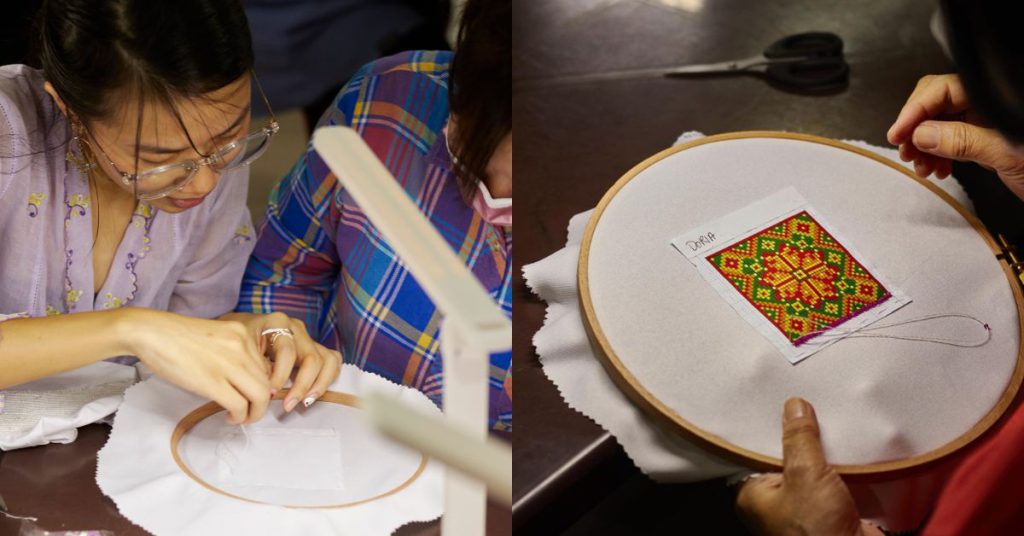
To bridge this gap, they find themselves not only crafting beautiful beadwork but also serving as educators, shedding light on the rich history and diverse nuances of Peranakan culture.
Yet, their challenges don’t end there. With backgrounds in finance and economics, design isn’t their forte, but they’re determined to learn and evolve, recognising the importance of appealing to the younger generation while staying true to tradition.
Despite the hurdles, their perseverance paid off—they broke even in 2023, with revenue fueled by retail sales, workshops, and community training initiatives.
Looking ahead, they aim to expand by tripling their retail partner stores and delving into the art industry with two upcoming exhibitions in Malaysia and Singapore.
However, their ultimate goal is to collaborate with a diverse range of creatives, from artists to fashion designers, and even shoemakers, to craft modern masterpieces that marry the timeless art of beading with contemporary design.
And who knows? Perhaps one day, they’ll even have their own line of Peranakan shoes, where every stitch tells a story—from traditional to modern, weaving together the past and present in every step.
- You can learn more about their business here.
- Read other articles we’ve written about Malaysian startups here.
Also Read: 3 GenAI use cases with the potential to take off in M’sia, based on global examples
Featured Image Credit: ManekNya